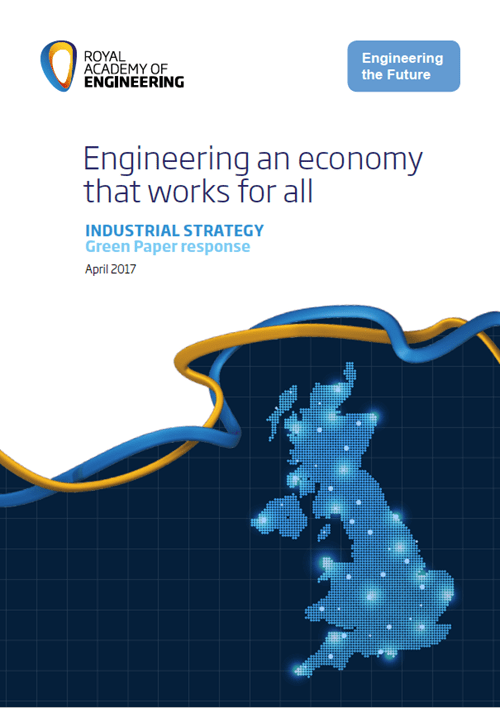Industrial strategy should develop National Innovation Assets network to boost innovation, says UK engineering profession
24th April 2017

Government should promote and support the use of existing infrastructure as test beds for new technology says a new report published today. The report, Engineering an economy that works for all, summarises the engineering profession’s response to the UK government’s Industrial Strategy Green Paper.
Drawing on evidence and opinion gathered through a series of workshops and a survey of the profession that received nearly 1,300 responses, 16% of which were members of the Institution of Chemical Engineers (IChemE). It addresses the 38 questions posed in the Green Paper and proposes developing a UK-wide network of ‘national innovation assets’ to provide real-world environments for testing innovations, as well as acting as focal points for workers to develop specialist skills and inform the development of regulation for new technologies.
The approach would formalise and provide government support for a practice that is happening informally, for example Transport Systems Catapult’s successful trial in Milton Keynes of their LUTZ Pathfinder pods – unmanned vehicles transporting people around the business district. Similar schemes across the country help produce a more balanced and effective innovation landscape, says the report, and extends the geographical reach of innovation activities beyond the current centres of excellence.
The report makes recommendations for how the government’s industrial strategy can enable the UK to capture value from its world class research base. It suggests a target of 3% of GDP for combined public and private investment in research and development and calls on government and the private sector to develop a roadmap towards achieving this goal.
It also argues that government needs to demonstrate a greater willingness to accept the risk of failure in its innovation support, including in how it manages the Industrial Strategy Challenge Fund. There is a strong appetite among the engineering community for government to focus the Fund, and widen R&D funding to big societal challenges alongside economic growth opportunities. The Fund should also be used to enable industrial competitors to collaborate with one another towards common goals, for example to address shared environmental challenges. Such pre-competitive collaborations often require public funds to de-risk the venture and the report notes that EU research and innovation programmes are currently significant funders of this type of activity.
The report suggests that potential changes to State Aid restrictions when the UK leaves the EU provide an opportunity to review how innovation incentives, such as R&D tax credits and procurement policy, can be enhanced, and suggests that the levy of VAT on shared research facilities with industry should be addressed in light of Brexit. More generally, government should strengthen its efforts to leverage public procurement to advance economic and social objectives by radically rebooting the Small Business Research Initiative and providing greater transparency on procurement spend with SMEs. Clearer signposting of existing support for SMEs is also urgently needed.
Early interactions between regulators and innovators are highlighted by the report as essential to ensure that regulation does not impede innovation unnecessarily or unintentionally. It also recommends that regulators should be encouraged to explain how risks for innovative technologies are being managed to allay public concerns.
Professor Dame Ann Dowling OM DBE FREng FRS, President of the Royal Academy of Engineering, says:
“Collaborative research and development between industry and academia delivers real benefits to the UK, driving growth and productivity improvements for firms and high-quality, use-inspired research outputs. We also know that access to talent also has a direct influence on businesses’ decisions about investment in R&D. Catalysing connections between businesses of all sizes, academics and investors is critical to improving the successful commercialisation of ideas.
“There is a compelling case for continued investment in our research base as a means of fuelling future prosperity, but we must also focus on supporting the innovation process if we are to reap the full benefit from the research.”